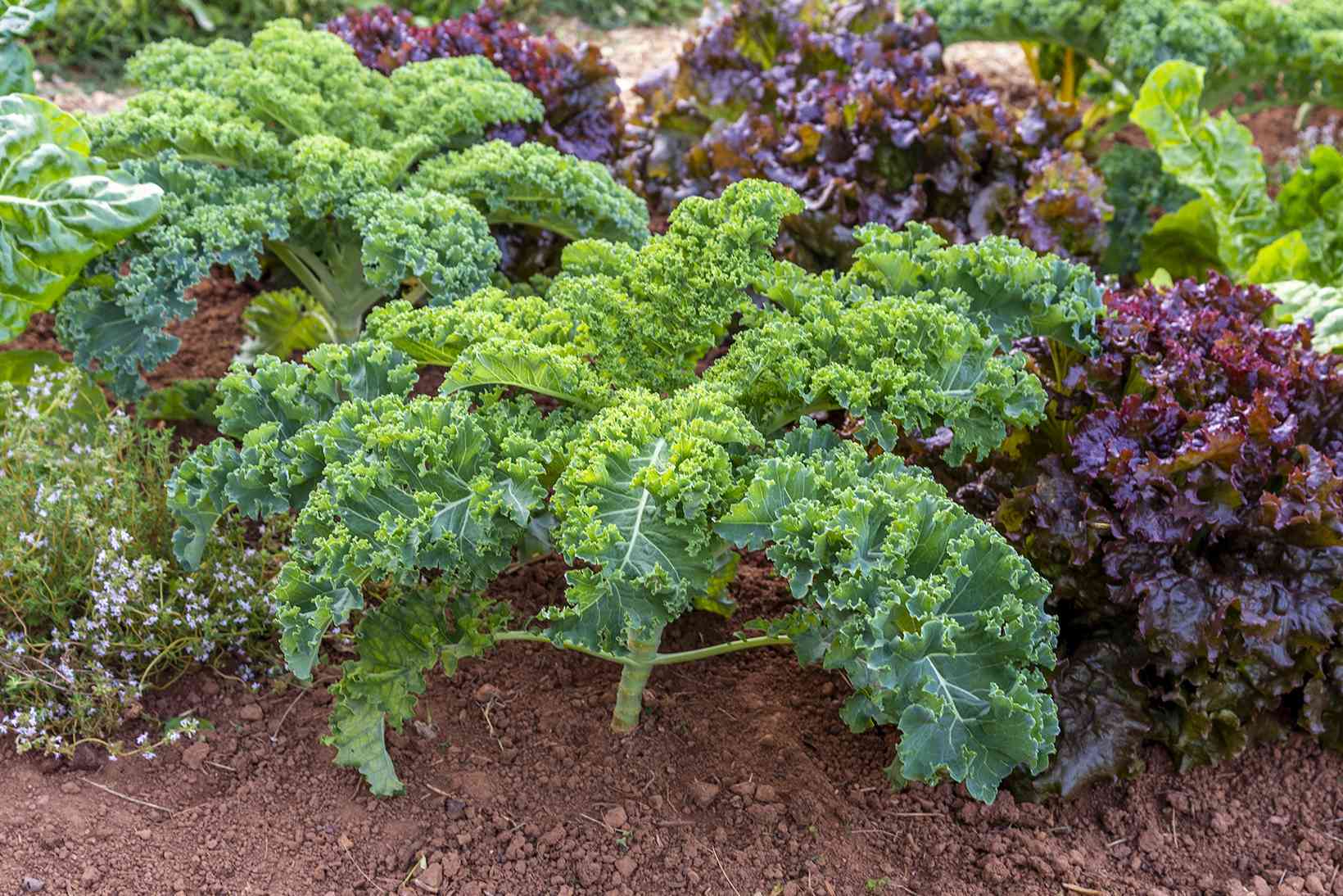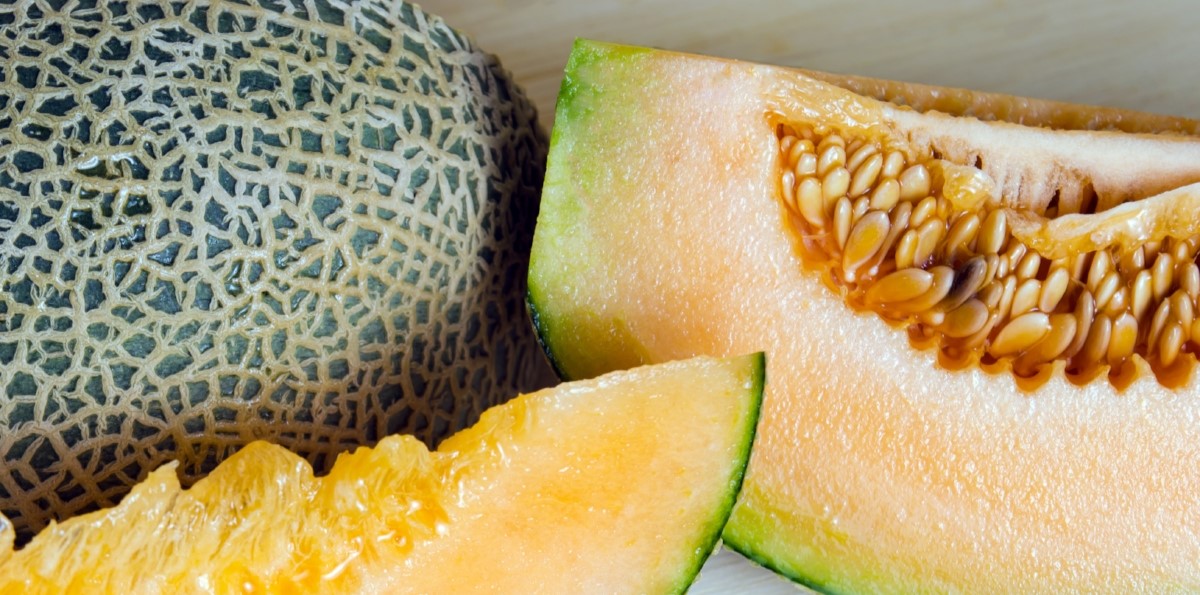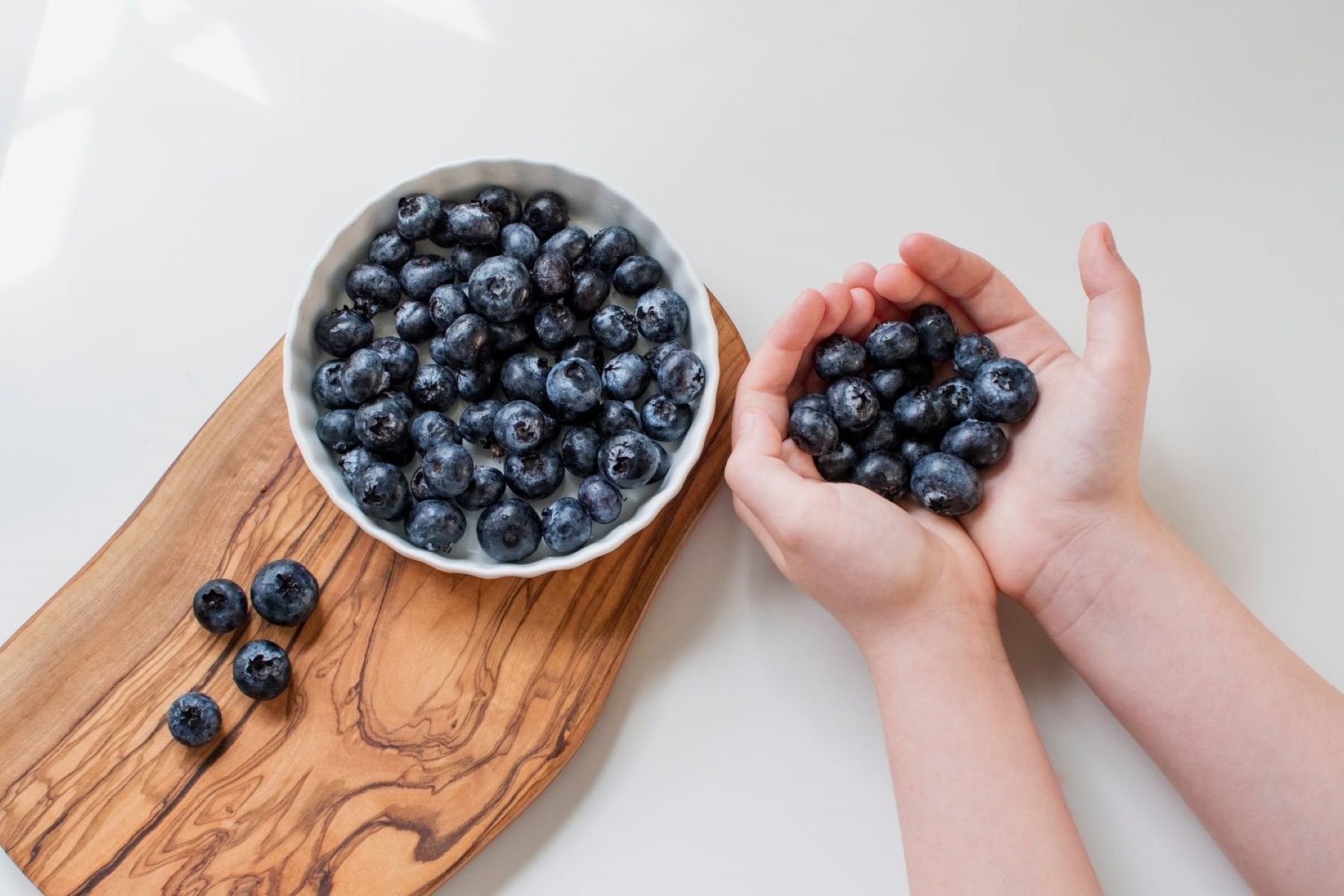Home>Garden Essentials>How To Start Lantana Seeds


Garden Essentials
How To Start Lantana Seeds
Modified: March 16, 2024
Learn how to start Lantana seeds in your garden and enjoy beautiful blooms all season long. Simple steps and helpful tips to get you started.
(Many of the links in this article redirect to a specific reviewed product. Your purchase of these products through affiliate links helps to generate commission for Storables.com, at no extra cost. Learn more)
Introduction
Welcome to the wonderful world of lantanas! These vibrant and beautiful flowers are a popular choice for gardeners who want to add a splash of color to their outdoor spaces. Lantanas are known for their eye-catching clusters of flowers that come in a variety of shades, including yellow, orange, pink, and purple. They are easy to grow and can thrive in different climates, making them a versatile addition to any garden.
If you’re looking to start lantana seeds and grow your own plants, you’ve come to the right place. This comprehensive guide will walk you through the process of starting lantana seeds from scratch, from gathering the necessary supplies to troubleshooting common issues. By the end, you’ll have all the knowledge and confidence you need to embark on your lantana-growing journey.
So, let’s roll up our sleeves and get started on the exciting adventure of starting lantana seeds!
Key Takeaways:
- Starting lantana seeds is an exciting adventure that requires gathering supplies, preparing the soil, and providing proper care. With patience and attention, you can grow vibrant lantanas from seed and enjoy their beautiful blooms.
- Harvesting lantana seeds after blooming allows you to continue growing these delightful flowers. By collecting and storing the seeds, you can propagate lantanas and share their joy with fellow gardeners.
Read more: What Do Lantana Seeds Look Like
Gathering Supplies
Before you begin your lantana seed-starting journey, it’s important to gather all the necessary supplies. Here are the items you’ll need:
- Lantana Seeds: The first step is to acquire lantana seeds. You can either collect the seeds from existing lantana plants or purchase them from a reputable seed supplier. Make sure to choose seeds from the specific lantana variety you desire.
- Seed Trays or Pots: Opt for seed trays or small pots with drainage holes to plant your lantana seeds. These containers will provide a suitable environment for seed germination.
- Potting Mix: Choose a high-quality potting mix that is well-draining but retains moisture. Avoid using regular garden soil, as it may be too heavy and can hinder seed growth.
- Watering Can or Spray Bottle: To keep the soil moist during the germination process, you’ll need a watering can or spray bottle. Aim to keep the soil consistently moist, but not waterlogged, to promote healthy seedling development.
- Grow Lights or Sunny Location: Lantanas thrive in bright sunlight, so ensure you have a sunny spot or invest in grow lights if you plan on starting the seeds indoors. Adequate light is crucial for healthy seedling growth.
- Plant Labels: It’s essential to label your lantana seed trays or pots to keep track of the variety and planting date. This will help you monitor their progress and identify any issues that may arise.
- Optional: Heat Mat: If you live in a region with a cooler climate, consider using a heat mat under your seed trays to provide gentle bottom heat. This can promote faster germination and seedling growth.
Once you have collected all the necessary supplies, you’ll be ready to move on to the next steps in starting your lantana seeds. Remember, proper preparation is key to ensuring successful seed germination and healthy plant growth.
Preparing the Soil
Creating the right growing medium is crucial for the successful germination and development of lantana seeds. Follow these steps to prepare the soil:
- Choose a Well-Draining Soil: Lantanas prefer well-draining soil. Prepare a potting mix by combining equal parts of quality potting soil, perlite or sand, and organic matter such as compost or peat moss. This mixture will provide a loose, well-aerated medium for the seeds to thrive.
- Moisten the Soil: Before planting the seeds, moisten the potting mix with water. Ensure that it is sufficiently damp but not overly saturated. Excess moisture can lead to fungal diseases and hinder seed germination.
- Fill the Seed Trays or Pots: Fill the seed trays or pots with the moistened potting mix, leaving a small gap at the top for watering. Gently pat down the soil to firm it up slightly.
- Avoid Overcrowding: Lantana seeds require space to grow and develop. Avoid overcrowding the seeds in the trays or pots. Optimal spacing allows for proper air circulation and prevents competition for nutrients.
- Sow the Seeds: Place a few lantana seeds on top of the soil in each tray or pot. Press the seeds gently into the soil to ensure good contact. If the seeds are small, you can sprinkle a thin layer of fine soil or vermiculite on top to cover them.
- Maintain Proper Temperature: Lantana seeds germinate best in warm temperatures, around 70-80°F (21-27°C). Consider placing the seed trays or pots in a warm spot or using a heat mat to provide the necessary warmth.
Once the soil is prepared and the seeds are sown, it’s time to provide proper care and attention to encourage the germination and growth of your lantana seeds.
Planting the Lantana Seeds
Now that your soil is prepared, it’s time to plant the lantana seeds. Follow these steps for successful seed planting:
- Water the Seeds: After planting the seeds in the prepared soil, give them a gentle watering using a watering can or spray bottle. Moistening the soil will help the seeds settle in and initiate the germination process.
- Provide Adequate Light: Lantana seeds need bright light for proper germination. If starting indoors, place the seed trays or pots near a sunny window or use artificial grow lights. Aim for at least 6-8 hours of direct sunlight or equivalent light intensity.
- Maintain Temperature: It’s crucial to provide a consistent temperature for successful germination. Keep the seed trays or pots in a warm location with temperatures around 70-80°F (21-27°C). Avoid exposing the seeds to cold drafts or extreme temperature fluctuations.
- Water Regularly: Check the soil moisture regularly and water the seeds as needed. Avoid letting the soil dry out completely, as this can inhibit germination. However, be cautious not to overwater, as excessive moisture can lead to fungal issues or rot.
- Be Patient: Lantana seeds typically germinate within 1-2 weeks, although some varieties may take longer. Be patient and maintain the optimal growing conditions. Continue providing water, light, and proper temperature until you see signs of germination.
- Thin out Seedlings: Once the seedlings emerge and develop their first set of true leaves, you may need to thin them out. Thin out the weaker or overcrowded seedlings, leaving the healthiest and strongest ones to continue growing.
- Transplant Seedlings: When the seedlings have grown a few inches tall and have developed a robust root system, they can be transplanted into larger containers or directly into the garden. Space the seedlings according to the recommended spacing for your lantana variety.
With proper planting techniques and care, your lantana seeds will begin to germinate and grow into healthy seedlings. Now it’s time to provide them with the necessary care to encourage their growth and development.
Providing Proper Care
Once your lantana seedlings have sprouted, it’s important to provide them with proper care to ensure their healthy growth and development. Here are some essential care tips:
- Watering: Keep the soil consistently moist but not waterlogged. Water the seedlings when the top inch of soil feels dry to the touch. Avoid overwatering, as this can lead to root rot and other issues.
- Light Requirements: Lantanas thrive in full sun, so choose a location that receives at least 6-8 hours of direct sunlight per day. If growing indoors, continue providing bright light using grow lights.
- Fertilizer: Lantanas are relatively low-maintenance plants and don’t require heavy fertilization. However, you can apply a balanced, slow-release fertilizer once every 3-4 weeks during the growing season to provide essential nutrients. Follow the package instructions for application rates.
- Pruning: Pruning promotes bushier growth and encourages more abundant flowering. Pinch back the tips of your lantana seedlings when they reach around 6 inches in height to encourage lateral branching. You can also remove any dead or diseased plant material as needed.
- Staking: If your lantana seedlings start to lean or become top-heavy, provide support by gently staking them. This will help keep the plants upright and prevent damage or breakage.
- Weed Control: Regularly check the area around your lantana seedlings for weeds and remove them promptly. Weeds can compete for nutrients and water, affecting the growth of your lantanas.
- Pest and Disease Management: Keep an eye out for common pests such as aphids, whiteflies, and spider mites. If necessary, use organic pest control methods or insecticidal soaps to manage infestations. Additionally, ensure good airflow and avoid overwatering to prevent fungal diseases.
By providing your lantana seedlings with proper care, you’ll create an environment that allows them to flourish. Regular monitoring and attentive care will ensure healthy growth and vibrant blooms as your lantanas mature.
Start Lantana seeds indoors 8-10 weeks before the last frost. Use a well-draining soil mix and keep the seeds moist. Once they have sprouted, transplant them into larger pots or outdoors in a sunny location.
Read more: How To Start Catnip Seeds
Monitoring Growth and Development
As your lantana seedlings continue to grow, it’s important to monitor their progress and make any necessary adjustments. Here are some key aspects to keep an eye on:
- Growth Rate: Observe how quickly your lantana seedlings are growing. They should steadily increase in size and develop new leaves as they establish their root system.
- Leaf Color and Texture: Healthy lantana seedlings will have vibrant green leaves that are free from discoloration or spots. The leaves should feel firm and turgid to the touch.
- Flower Development: Depending on the lantana variety, your seedlings may start to produce flowers after a few months of growth. Monitor the flower buds forming and track the progress of their blooming.
- Height and Spacing: Keep an eye on the height and spacing of your lantana seedlings. Make sure they are not overcrowded and have enough space for proper air circulation. If necessary, thin out the plants to maintain optimal spacing.
- Overall Health: Regularly inspect your lantana seedlings for any signs of pests, diseases, or nutrient deficiencies. Indicators such as yellowing leaves, stunted growth, or wilting should be addressed promptly to ensure the health of your plants.
- Watering and Fertilization: Monitor the moisture levels of the soil and adjust your watering schedule accordingly. Also, observe how your lantanas respond to fertilization and adjust the application rates if necessary.
- Weather Conditions: Keep an eye on weather conditions, especially if your lantanas are planted outdoors. Extreme temperatures, heavy rains, or drought can impact their growth and health.
Regular monitoring of your lantana seedlings will allow you to address any issues or adjustments needed in a timely manner. By providing attentive care and staying vigilant, you can ensure that your lantanas continue to thrive throughout their growth and development stages.
Troubleshooting Common Issues
While growing lantanas can be a rewarding experience, you may encounter some common issues along the way. Here are solutions to troubleshoot these problems:
- Poor Germination: If your lantana seeds are not germinating, it could be due to low temperature or improper moisture levels. Ensure that the seeds are kept warm (around 70-80°F or 21-27°C) and the soil is consistently moist but not waterlogged. Consider using a heat mat or adjusting your watering practices if poor germination persists.
- Leggy Seedlings: Leggy seedlings occur when plants grow tall and spindly with weak stems. This is usually a result of insufficient light. Move the seedlings to a location with brighter light or provide supplemental grow lights to encourage sturdier growth.
- Yellowing Leaves: Yellowing leaves can be a sign of both overwatering and underwatering. Assess the moisture levels of the soil and adjust your watering practices accordingly. Also, check for proper drainage to prevent waterlogged conditions that can lead to root rot.
- Pest Infestations: Common pests that may affect lantanas include aphids, whiteflies, and spider mites. Monitor your plants regularly and treat any infestations promptly. You can use organic insecticidal soaps or natural pest control methods to manage these pests.
- Disease Problems: Lantanas are generally resistant to diseases, but they can occasionally be susceptible to fungal infections. To prevent diseases, ensure good airflow around your plants by spacing them properly and avoid overhead watering that can promote moisture-related issues.
- Poor Flowering: If your lantanas are not blooming as expected, it could be due to insufficient sunlight or inadequate nutrition. Ensure that your plants are receiving at least 6-8 hours of direct sunlight per day and provide regular, balanced fertilization to promote healthy flowering.
Remember that it’s normal to encounter some challenges while growing lantanas. By observing your plants closely and taking appropriate action, you can overcome these common issues and ensure the long-term success of your lantanas in the garden.
Harvesting Lantana Seeds
After your lantana plants have bloomed and produced flowers, you can harvest the seeds to grow new plants in the future. Here’s how to collect lantana seeds:
- Identify Mature Seeds: Wait for the lantana flowers to wither and dry out. The seed heads will start to form and turn brown. Mature lantana seeds are small and dark in color.
- Prepare a Container: Place a clean container, such as a paper bag or a small envelope, underneath the seed heads to catch the seeds as they fall.
- Harvest the Seeds: Gently rub or shake the seed heads over the container to dislodge the seeds. The mature seeds should easily come loose and fall into the container.
- Remove Debris: After harvesting the seeds, carefully remove any debris or chaff, such as dried petals or other plant material, from the container. This will ensure that you have clean seeds for storage.
- Store the Seeds: Transfer the seeds to a clean, dry container, such as a seed packet or a small airtight jar. Label the container with the variety and date of collection. Store the seeds in a cool, dry place until you are ready to plant them.
- Seed Viability: Lantana seeds have a relatively short viability period, usually lasting for about 1-2 years. To maximize germination rates, it’s best to plant the seeds within the first year of harvesting.
By harvesting lantana seeds, you can continue to grow these beautiful flowers year after year. Whether you want to expand your garden or share seeds with fellow gardeners, collecting lantana seeds is a rewarding and sustainable practice.
Conclusion
Congratulations on completing this comprehensive guide on starting lantana seeds! By following the steps outlined in this article, you now have the knowledge and confidence to successfully grow lantanas from seed. Whether you’re a seasoned gardener or a beginner, lantanas are a wonderful addition to any garden, with their vibrant colors and easy-care nature.
Remember, the key to starting lantana seeds is to gather the necessary supplies, prepare the soil properly, and plant the seeds with care. Provide your lantanas with proper watering, adequate sunlight, and essential nutrients to support their growth. Monitor their progress, address any issues promptly, and enjoy the beautiful blooms that lantanas have to offer.
Throughout the lantana growing journey, you may encounter common challenges such as poor germination, leggy seedlings, or pest infestations. By troubleshooting these issues using the tips provided in this guide, you can overcome obstacles and ensure healthy and thriving lantanas in your garden.
Lastly, don’t forget to harvest lantana seeds when they are mature. By saving and storing the seeds properly, you can continue to propagate lantanas and share the joy of these delightful flowers with others.
Thank you for joining us on this lantana seed-growing adventure. We hope that this guide has inspired you to start your own lantana seeds and create a vibrant and colorful garden. Happy gardening!
Frequently Asked Questions about How To Start Lantana Seeds
Was this page helpful?
At Storables.com, we guarantee accurate and reliable information. Our content, validated by Expert Board Contributors, is crafted following stringent Editorial Policies. We're committed to providing you with well-researched, expert-backed insights for all your informational needs.















0 thoughts on “How To Start Lantana Seeds”